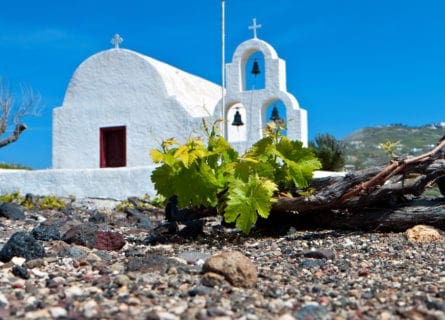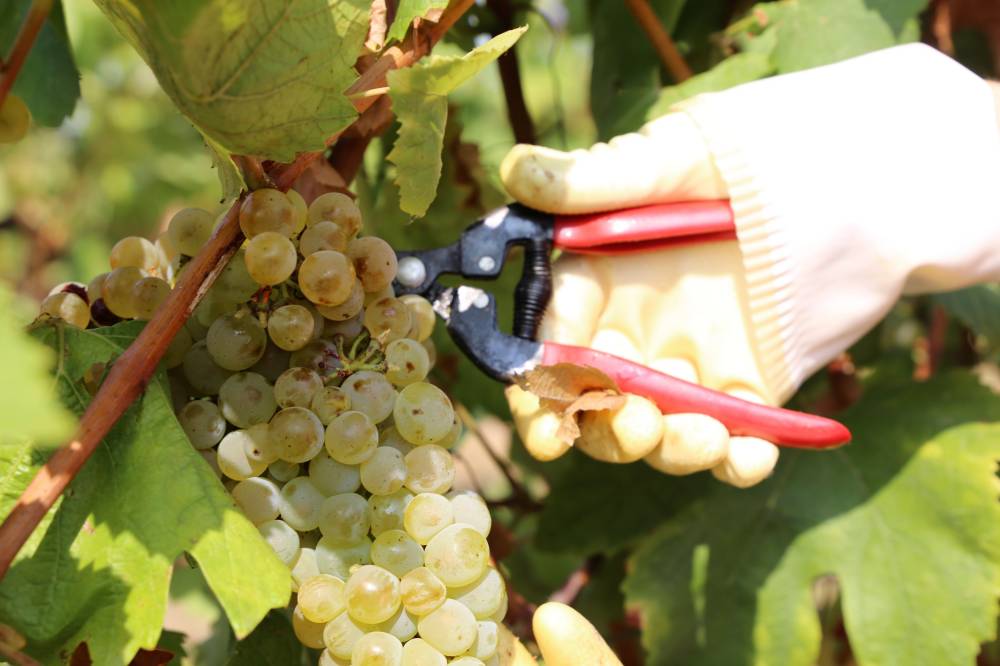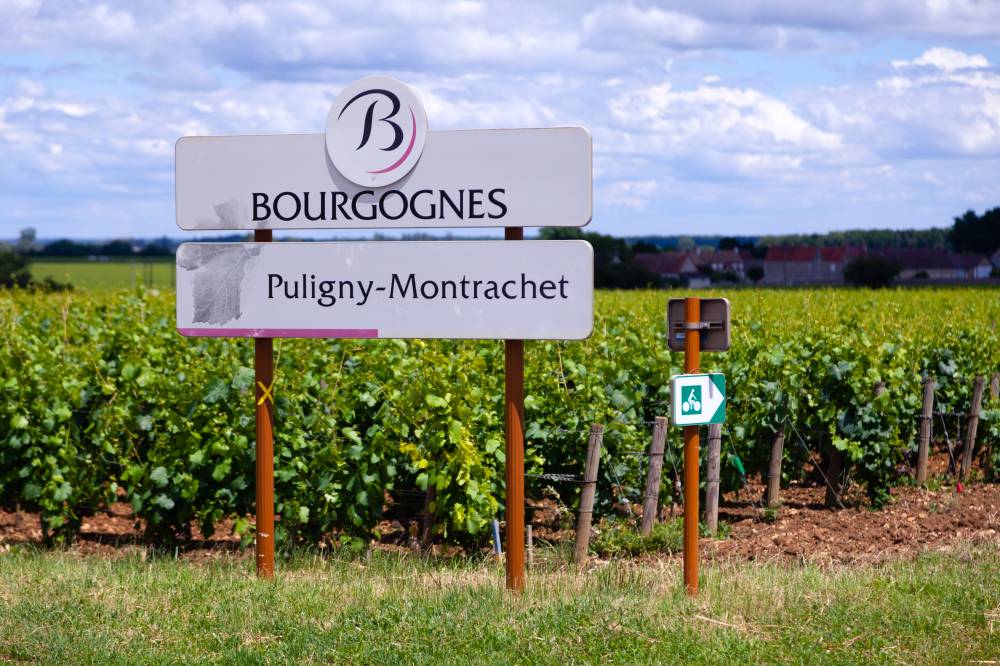
The Ten Rarest Wine Grape Varieties
July 28, 2020
Grape Varieties continue to play an essential role in the wine's language, which is why 'varietal labeling' has become so common.
By: James lawrence / Last updated: February 3, 2025
Estimated reading time: 11 minutes
Chardonnay is Burgundy’s most successful – and famous – viticultural export. Although, for a while, the Burgundians would like to claim dominion over this inimitably fashionable grape, it is very much a global phenomenon. From Sonoma Valley to Australia’s Margaret River, the world is full of premium Chardonnay wines. This is partly because, unlike Pinot Noir, it can be grown and ripened without difficulty almost anywhere, producing high-quality fruit in a variety of soils and climates. All of these beg the question: Why do collectors keep returning to the often expensive Côte d’Or when there is better value to be found elsewhere?

Guide to French White Wine: Read more
They will tell you that despite the impressive competition, there is a finesse and depth to top white Burgundy that cannot be replicated elsewhere. Indeed, aficionados have been known to fall on their knees in reverence to the Grand Crus of the Côte de Beaune. The most celebrated crus, such as Le Montrachet and Bâtard-Montrachet, will sell at auction for almost any price. It is that magical combination of soil, variety, and climate that no other region has (yet) managed to emulate. As far as the Burgundians are concerned, they never will.
Historically referred to as Pinot-Chardonnay, this iconic grape is almost certainly indigenous to central-eastern France. However, its genetic origins were shrouded in mystery for centuries until the University of California at Davis undertook an extensive DNA analysis of the grape. Their research indicated that Chardonnay is probably the result of a cross between the Pinot Noir and Gouais Blanc varieties, occurring at some point in the ancient past. According to historians, after the Romans conquered Gaul in 27 BC, they imported several varieties from their expanding empire. This included Gouais Blanc, a grape indigenous to Croatia.
Of course, not everyone accepts this historical account of Chardonnay’s arrival into the world. Dissenting voices claim that the grape’s ancestry can be linked back to the vineyards of the Middle East; during the crusades of the 1100s, returning soldiers would often bring back the spoils of war from the Levant, including food and agricultural products. Nevertheless, there is no objective evidence to support this assertion. It has even been claimed that Chardonnay originated in Cyprus; however, most viticulturists regard that as fanciful.
The Burgundy region has been an important vine-growing center since the arrival of the Roman conquerors. During the reign of Charlemagne in the 8th Century, the church assumed key responsibility for tending Burgundy’s vines and winemaking. As a result, the Cistercian monks started to delineate Burgundy’s vineyards according to their quality and character – the world’s first terroir classification. Indeed, of all the world’s great wine regions, Burgundy is where the soil has been studied the longest. This hierarchy is rigidly enforced today, albeit promotion is theoretically possible if the authorities deem that a vineyard has been outperforming its historical classification. But there are no established precedents in Burgundy for such an occurrence.
By the 15th Century, Burgundy was a rich and influential European region. The Dukes of Burgundy had built up one of the most powerful states in Europe, controlling parts of Holland and Belgium. During their reign, the nobility started acquiring the vineyards as part of their estates, and the power and importance of the church subsided. However, the real blow came after the French Revolution of the late 18th Century; land owned by the church was seized and sold off in 1791, while estates controlled by the aristocracy soon followed. Yet the new landlords had the sense to maintain this lucrative business, following the precepts of terroir and winemaking laid down by their disposed forbears. Burgundy’s classification was properly codified in the 19th Century, encouraging growers to follow strict grape variety and geographical origin rules.
Chardonnay has long been an important part of this fascinating story. The most famous white wine village in France, Puligny-Montrachet, dates back to Gallo-Roman times known as Puliniacus. Many centuries later, US President Thomas Jefferson singled out the vineyard of Le Montrachet for particular exaltation during his tour of France in 1787. He noted that the Cote d’Or’s top climats (vineyard sites) were Chambertin, Romanee, Clos Vougeot, and Montrachet. As a result, Chardonnay grown in this corner of France remains the most expensive (still) white wine available today.
And yet, Chardonnay is famous for its forgiving nature and, some might say, ‘neutral’ flavor profile. This is the central paradox at the heart of this chameleon grape: Chardonnay is massively popular with growers because (unlike Riesling) it does not have a particularly strong character. Hence, oak fermentation and/or maturation is an important part of the winemaking process. What could be better than a malleable piece of viticultural ‘clay,’ able to transmit the nuances of its terroir with razor-sharp precision? From Chablis’s steely minerality to Meursault’s hedonistic opulence, Chardonnay is very much a grape of the soil and climate. If the site has much to say, then the wine will also be.
It is also notoriously prone to mutation. Over 30 different clonal varieties are planted across France today, including the famous ‘Dijon clones‘ developed at the eponymous university in Burgundy. Some of the more vigorous clones require a lot of work throughout the growing season, including a strict pruning regime. It is often said, with some justification, that Chardonnay is a generally ‘easy’ variety. But that does not mean that the grape is a pushover. Overmaturity can be a real problem in certain years; in vineyards with over-cropped vines, the fruit can quickly transition from perfectly ripe to overripe. Such wines peak very rapidly and lack the sufficient structure to age into glorious complexity.
In Burgundy, Chardonnay tends to bud and achieve phenolic ripeness just a week or so after the Pinot Noir, although it is still susceptible to spring frost attacks. With judicious pruning, the vines will yield small, relatively compact cylindrical clusters of berries, which can be prone to coulure (uneven berry development) in cooler/wetter years. The best sites contain a high percentage of limestone and are planted at the top of a slope. Unlike Pinot Noir, Chardonnay can ripen on the west-facing slopes of the Côte d’Or, producing racy, structured, and deeply complex white wines. The best examples from appellations, such as Corton-Charlemagne, can outlive their owners!
How do you produce a $2000 bottle of white wine? And more importantly, what are the key differences between the handling of Two Buck Chuck Chardonnay and Le Montrachet?
Many Burgundians regard ‘minimal intervention’ as their guiding panacea. They see themselves as custodians of the soil, believing that the greater the terroir, the less human inputs are required. This approach has a certain wisdom: Burgundy is a wine that suffers more than most from manipulations such as fining and filtration. Bad or clumsy winemaking can destroy the nobility of even Burgundy’s most feted Grand Crus. But it is equally true that all great Chardonnay relies upon a series of well-timed human interventions that can make or break the wine.

Most premium Chardonnay wines are based on the must from pressed whole bunches. The initial handling will be gentle and sensitive, ensuring the grapes reach the winery in prime condition. High-tech crushers give the winemaker many choices: they can elect to use crushed berries or simply remove the stems from bunches before pressing. The latter is the preferred option, producing clear juice that produces fine and structured whites. Sulfur dioxide is often added at this point to prevent oxidation and spoilage.
Normally, the must is allowed to settle overnight to allow the solid matter to fall to the bottom of the vat. This may then be chilled before the juice is racked into barrels for the primary fermentation. Many Burgundians are keen on using wild yeast strains, although they may resort to cultured yeast if there are problems with the fermentation.
Traditionally, barrel fermentation in Burgundy was carried out at moderately high temperatures for a relatively short period of time. This produces very complex and structured wines, albeit the primary fruit flavors will lay dormant for several years, emerging in bottle as the wine ages. However, mindful of the shifting priorities of modern consumers, certain growers are now undertaking part – or all – of the fermentation in stainless steel tanks, keeping the temperature at low levels. Another option is to pump the wine from the cask and pass it through a heat exchanger. Both approaches yield a more fruit-driven style of wine; however, they may not boast the longevity of wines fermented classically.
Malolactic fermentation (converting malic to lactic acid) and oak maturation will now occur. The finest terroirs can produce wines that withstand up to 18 months in 100% new French barrique, although they do not present the critical mass. A balance of new and older wood generally produces a harmonious integration of the oaky flavors. Lees contact is also widely practiced in Burgundy – this involves stirring up the dead yeast cells that float to the bottom of the cask to enrich the wine. Growers who own vineyards in the most renowned crus will transfer the lees from a wine like Meursault Charmes to a lesser village cuvée to spread the benefits of terroir! After maturation in oak, the wines will be bottled. As a rule, Burgundians do not like filtration. The purity of terroir expression is what they seek above all other considerations and goals. In the majority of cases, they succeed.
The past few decades have witnessed a profound shakeup in producing Chardonnay wines from Burgundy. The rise of organic and biodynamic viticulture is encouraging lower yields and higher-quality grapes; better spray regimes and viticultural practices have led to greater terroir expression, allowing growers to communicate the respective nuances of their climats more accurately. Moreover, producers have responded to understandable criticism over premature oxidation with protective handling and intelligent levels of sulfur dioxide. The result is that the top white Burgundy is riper, more complex, and built to last. From Chablis right through to the great names of the Côte de Beaune, white Burgundy is on a roll.
Of course, not all white Burgundy relies on the Chardonnay grape – some excellent wines are now being fashioned from Aligoté. Nevertheless, Chardonnay remains the driving force of every single celebrated Premier and Grand Cru from the region. If one side of the Burgundy equation is about embracing technological – and viticultural – progress, the other is unapologetically anchored in tradition and heritage. Indeed, the classification of Burgundy’s white Grand Crus has not changed since it was codified in the 19th Century. And while we should never say never, they are unlikely to welcome new additions in the near future.
This is the complex magic that lies behind Burgundy’s global allure. Chardonnay lovers recognize that California, New Zealand, and Australia make exceptional white wines from the grape. And yet, they cannot compete in the marketplace in terms of price and prestige. “Other parts of the world, particularly California and to a lesser extent Australia, can and do produce plenty of competition for village Burgundy,” opined the late author and expert Clive Coates MW. “Elsewhere, the terroirs have not yet been found or correctly exploited. As a result, the top Montrachets, Chevaliers, and Bâtards are wines to drink on bended knees, with heartfelt and humble thanks,” he added. A quintessential blend of poetry and astute observation from a man who understood, far better than anyone, why Burgundy reigns supreme.
This synergy between Chardonnay and the top climats of Burgundy continues to excite consumers, delight critics, and fascinate geologists. Le Montrachet is a perfect example – this vineyard has been studied countless times over the decades. Scientists have identified numerous trace elements in the soil, including zinc, silver, cobalt, and even titanium. Yet no one has come any closer to explaining why this site produces the finest Chardonnay in the world. There is mystery and shadows in the vineyards of the Côte d’Or, in addition to endless hype and ambitious levels of price inflation. Occasionally, the odd collector may grumble when their favorite domaine ups the asking price by another 20 percent, often due to paltry yields and rising demand. But most would not consider looking elsewhere. Burgundian Chardonnay can electrify the senses like no other white style. In the eyes of its devout and numerous acolytes, it is priceless.
Guide to Burgundian Gastronomy: Read more
If you would like us to customize an exclusive luxury tour, contact us and let us know your travel plans. We offer luxury food and wine tours for private groups of a minimum two guests. In addition, all of our private, chauffeured tours are available year-round upon request.

